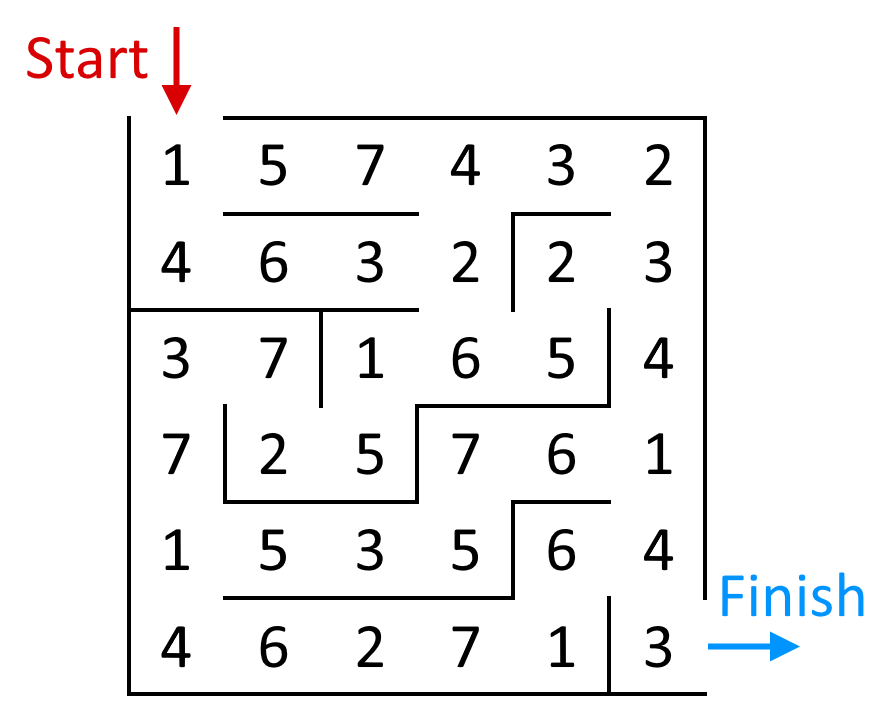Copyright © University of Cambridge. All rights reserved.
'Maze 100' printed from https://nrich.maths.org/
Show menu
Why do this problem?
This problem uses a maze as a context in which to practise addition and to work in a systematic way. In the past many comics, annuals and 'children's corners' in newspapers had a maze of some sort but they are less common now. As a result, some children may not have come across mazes like this so they may need some explanation of what to do. You might like to print off a sheet containing two copies of the maze.
Possible approach
Show the maze on screen and then ask the class to watch you carefully. Don't say anymore, but draw out a route through the maze, one number at a time, and each time you go through a new number, write up the running total on the board. Do all this in silence until you reach the exit of the maze and have your final total. Then give learners chance to talk in pairs about what they
think you were doing.
Use a whole class discussion to clarify the 'rules' of the task and then challenge them to find a total of 100, working in pairs. Give some time for learners to work on the problem, then draw everyone together for a mini plenary. Ask pupils to describe how they are tackling the task. This will allow some children to articulate their thinking so far, and therefore help to
clarify their thoughts, whereas for others it will be a chance to hear what other pairs have done so helping them 'get off the ground'.
Having shared some strategies, walk around the room as children work, listening out for those who are forming reasoned arguments for their route, as opposed to those who are working more haphazardly. In addition, look out for pairs who begin to 'tweak' solutions to get nearer to 100, rather than beginning again from scratch.
Key questions
Tell me about your journey through the maze.
How are you choosing where to go next?
What do you notice about the structure of the maze?
How could you adjust your journey to get closer to 100 rather than starting again at the beginning?
How will you record what you have tried?
How is your recording supporting you to solve this challenge?
Possible extension
You could ask questions such as:
- Is there more than one way through the maze that totals 100?
- What is the highest total? Lowest total?
- Can you go through the maze and make a total that is a multiple of 10? A prime number?
Pairs of children might like to set their own end totals as a challenge for each other.
Learners could make up an even harder maze than this with these numbers in it.
Mazes can be made any shape and can be based on squares, circles, triangles and hexagons.
Or learners could design a different maze where the numbers were decimals and the challenge was to travel through the maze and emerge with a total of 10.
Possible support
Challenge learners to find an accurate total for their journey through the maze. Children may like to use a beadstring to help with the addition and help keep a running total.
